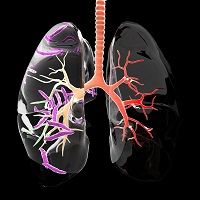Article
Genetic Variation Drives Tuberculosis Susceptibility
Author(s):
An article recently published in Nature Genetics identified a gene responsible for allowing the tuberculosis (TB) pathogen to evade the immune system leading to infection.

An article recently published in Nature Genetics identified a gene responsible for allowing the tuberculosis (TB) pathogen to evade the immune system leading to infection.
The World Health Organization (WHO) reported 1.5 million people worldwide died from TB in 2013. While one-third of people carry the infection and exhibit no symptoms, about one in ten go on to develop active TB, a University of Cambridge news release mentioned.
In the largest genetic analysis of TB to date, Sergey Nejentsev, wellcome trust senior research fellow from the Department of Medicine at the University of Cambridge, and his colleagues looked at 5,530 pulmonary TB patients — having a total 7.6 million genetic variations — in addition to 5,607 healthy controls.
Their study, published on March 16, documented a gene located on the 8q24 chromosome (P= 2.6 × 10−11 for rs4733781; P = 1.0 × 10−10 for rs10956514) called ASAP1, that researchers believe activate proteins of the same name which drive the immune system.
“Dendritic cells (DCs) showed high ASAP1 expression that was reduced after Mycobacterium tuberculosis infection, and rs10956514 was associated with the level of reduction of ASAP1 expression,” the authors wrote.
However, the team found that the gene is less efficient when exposed to TB in certain individuals. People holding a specific ASAP1 variant are more vulnerable due to having significantly lower levels of the protein.
With new insight on the genetic mechanisms behind TB, the team believes this information could be used to develop novel TB treatments.
“Our study provides a new insight into biological mechanisms of TB,” Nejentsev said. “TB is a major global health problem and the threat of drug-resistance means that we urgently need to develop new ways of fighting back. In future, it may be possible to target immune pathways that involve ASAP1 to design efficient vaccines for TB prevention.”





